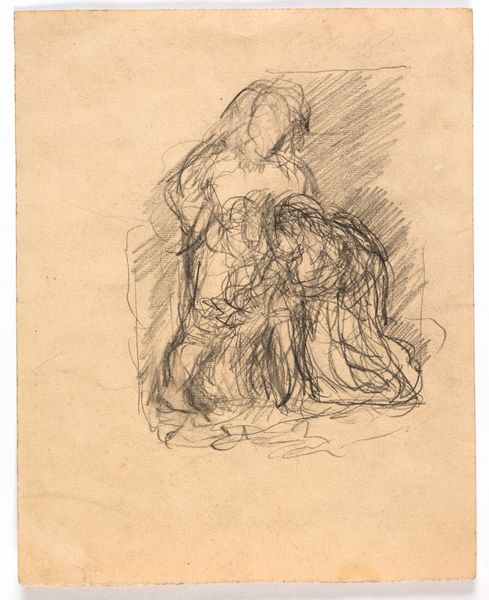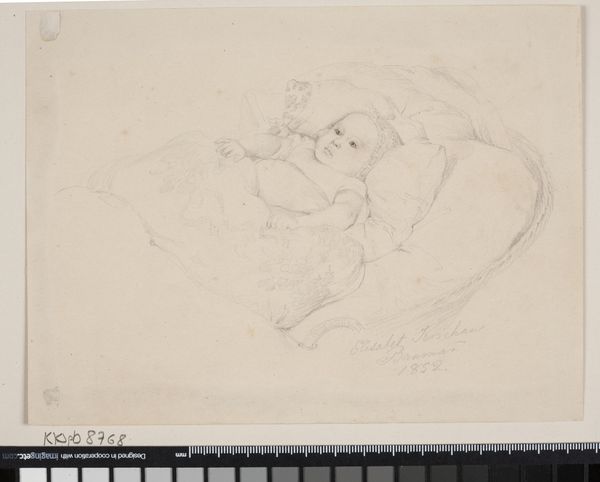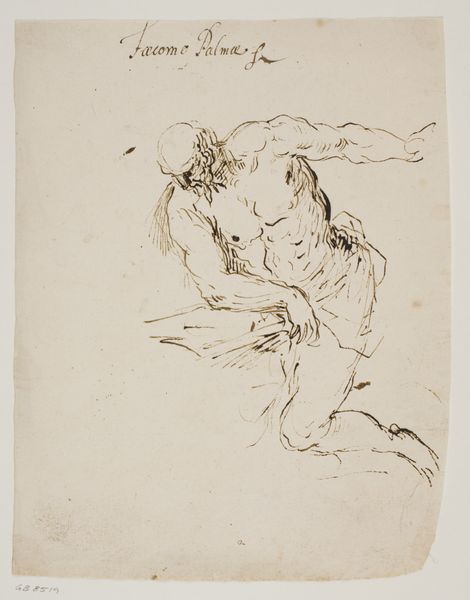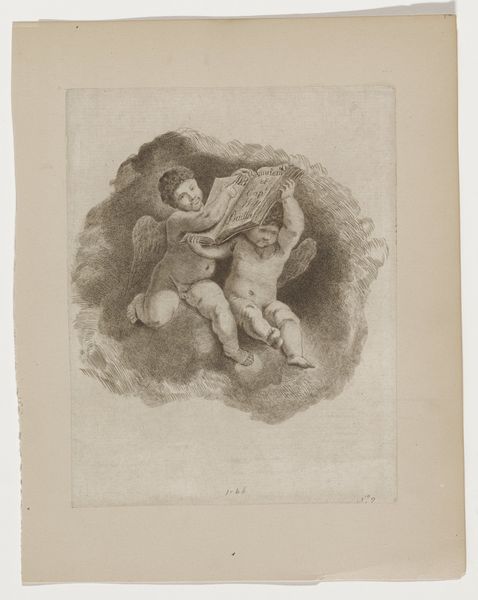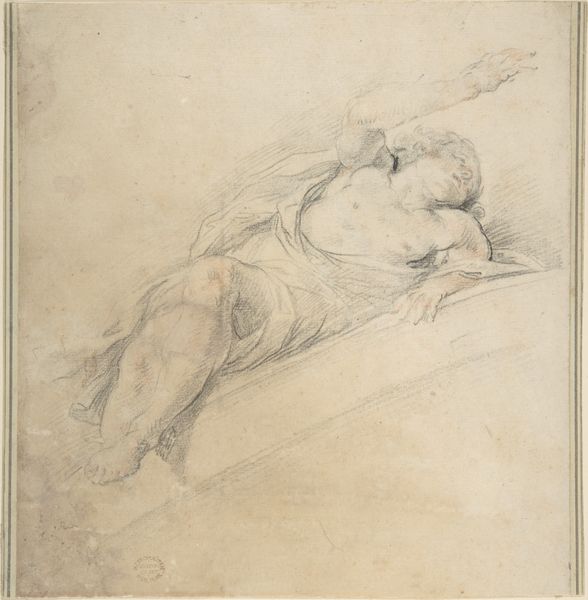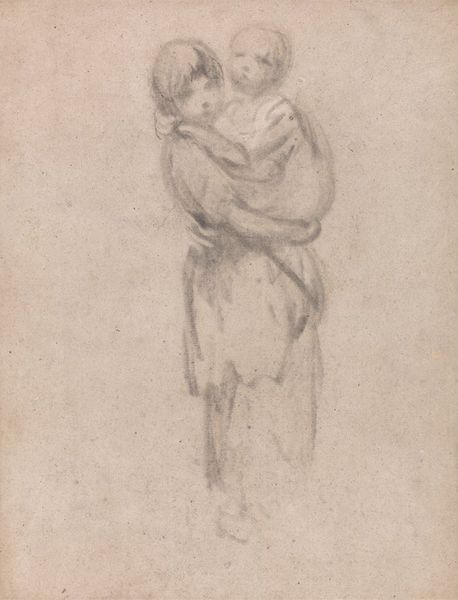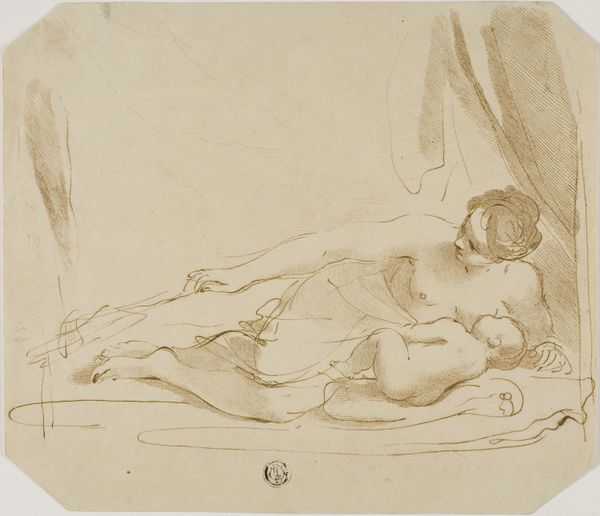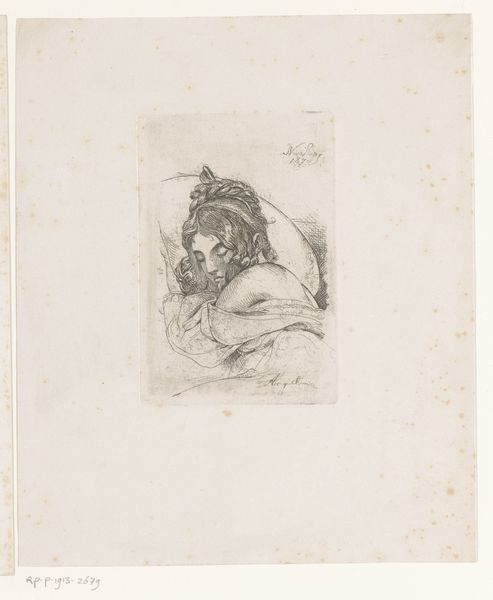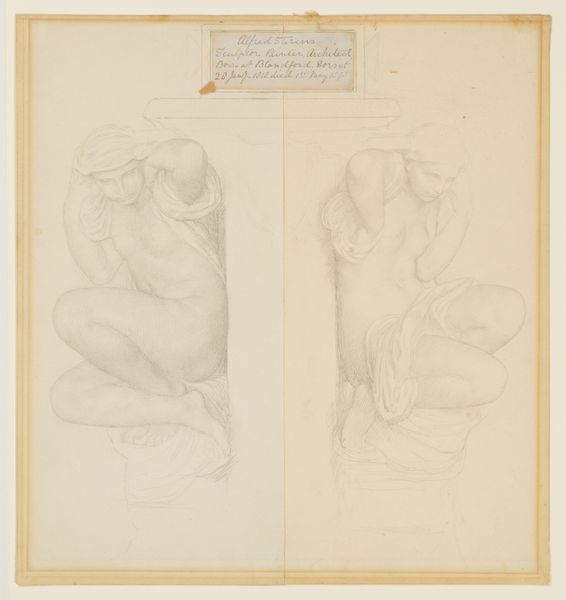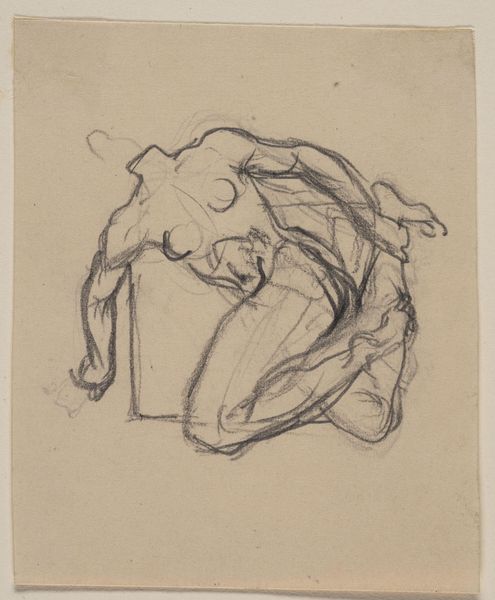
drawing, paper, pencil
#
drawing
#
mannerism
#
figuration
#
paper
#
pencil drawing
#
pencil
#
nude
Dimensions: 228 mm (height) x 184 mm (width) (bladmaal)
Curator: Here we have Jacopo Palma il Giovane's "St Sebastian Kneeling," created sometime between 1548 and 1628. It’s a pencil drawing on paper, currently residing here at the SMK. Editor: My first impression is one of intense emotion. Despite the sketch-like quality, the figure's posture and the hand pressed to his chest convey a palpable sense of anguish and inner turmoil. Curator: Palma certainly uses line and shadow to dramatic effect. The stark contrasts evoke a Mannerist aesthetic, focusing on emotional intensity. Look at the dynamism of the figure itself, rendered with economical, yet highly descriptive lines. How do you see this play of form working with, perhaps against, its cultural significance? Editor: Saint Sebastian is typically depicted pierced with arrows, a victim of persecution, yet this drawing seems to capture the moment just before the torment, steeped in anticipation and resignation. He's a figure often co-opted to represent strength in the face of oppression and used as a symbol during periods of plague or other socio-political unrest. The very incompleteness suggests he is open for symbolic assignment. Curator: I am intrigued that the figure is facing upwards, almost towards the sky, giving verticality to the composition, which pushes our gaze towards an undefined realm of divine intervention, reflecting Mannerism’s use of dynamic contrapposto. Note also how the materiality contributes. The roughness of the pencil lines lends an immediacy, suggesting that he may not have conceptualised his end. Editor: Precisely! Palma’s choice of a quick sketch in pencil, rather than a fully realized painting, points toward the more immediate experience of suffering rather than a glorified, heroic portrayal. This connects with various interpretations where he signifies resilience among the suffering. This connects with a history where persecuted minorities have latched onto this. Curator: Do you see the blank spaces and unfinished areas around the edges allowing viewers a freedom to engage? Editor: Undoubtedly, inviting a participatory completion of his martyrdom in their imaginations. This engagement gives an entry to empathy with those suffering today from systematic marginalisation. It offers more potential due to less didactic instruction from the artist. Curator: A final reflection: despite being incomplete, its formal dynamism evokes emotions so strong they are deeply moving. Editor: Indeed, "St Sebastian Kneeling" provides both a lens for past persecutions and the promise of fortitude required by injustices still being felt today.
Comments
No comments
Be the first to comment and join the conversation on the ultimate creative platform.

